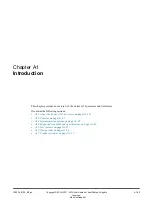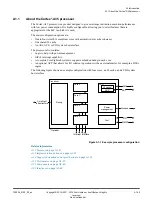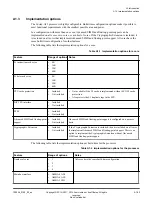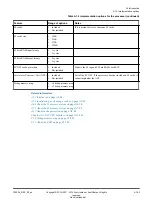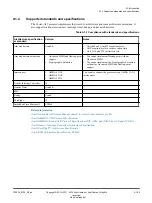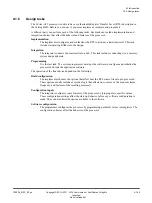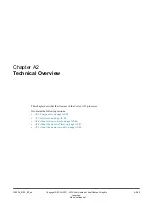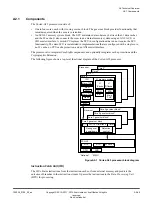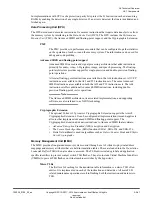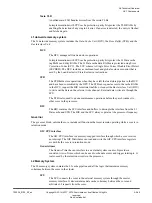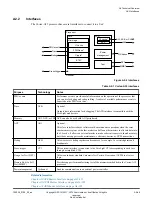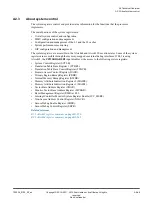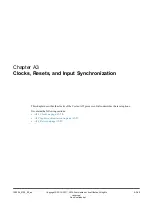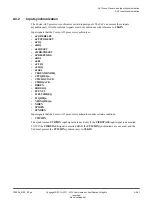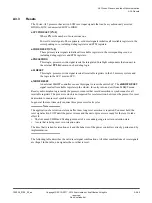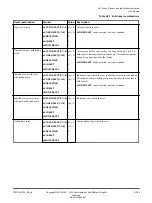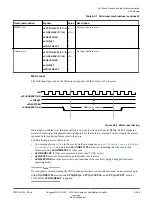
In implementations with CPU cache protection, parity bits protect the L1 Instruction cache data and tag
RAMs by enabling the detection of any single-bit error. If an error is detected, the line is invalidated and
fetched again.
Data Processing Unit (DPU)
The DPU decodes and executes instructions. It executes instructions that require data transfer to or from
the memory system by interfacing to the
Data Cache Unit
(DCU). The DPU includes the
Performance
Monitor Unit
(PMU), the Advanced SIMD and floating-point support, and the Cryptographic Extension.
PMU
The PMU provides six performance monitors that can be configured to gather statistics
on the operation of each core and the memory system. The information can be used for
debug and code profiling.
Advanced SIMD and floating-point support
Advanced SIMD is a media and signal processing architecture that adds instructions
primarily for audio, video, 3-D graphics, image, and speech processing. The floating-
point architecture provides support for single-precision and double-precision floating-
point operations.
All scalar floating-point instructions are available in the A64 instruction set. All VFP
instructions are available in the A32 and T32 instruction sets. The same Advanced
SIMD instructions are available in both the A32 and T32 instruction sets. The A64
instruction set offers additional Advanced SIMD instructions, including double-
precision floating-point vector operations.
Note
The Advanced SIMD architecture, its associated implementations, and supporting
software, are also referred to as NEON technology.
Cryptographic Extension
The optional Cortex
‑
A35 processor Cryptographic Extension supports the Armv8
Cryptographic Extensions. It can be configured at implementation time and applies to
all cores that implement Advanced SIMD and floating-point support. The
Cryptographic Extension adds new instructions to Advanced SIMD that accelerate:
•
Advanced Encryption Standard
(AES) encryption and decryption.
• The
Secure Hash Algorithm
(SHA) functions SHA-1, SHA-224, and SHA-256.
• Finite field arithmetic used in algorithms such as
Galois/Counter Mode
and
Elliptic
Curve Cryptography
.
Memory Management Unit (MMU)
The MMU provides fine-grained memory system control through a set of virtual-to-physical address
mappings and memory attributes that are held in translation tables. These are loaded into the
Translation
Lookaside Buffer
(TLB) when a location is accessed. The TLB entries include global and application
specific identifiers to prevent context switch TLB flushes. They also include Virtual Machine Identifiers
(VMIDs) to prevent TLB flushes on virtual machine switches by the hypervisor.
Micro TLBs
The first level of caching for the translation table information is a micro TLB of ten
entries. It is implemented on each of the instruction and data sides. All main TLB
related maintenance operations result in flushing both the instruction and data micro
TLB.
A2 Technical Overview
A2.1 Components
100236_0100_00_en
Copyright © 2015–2017, 2019 Arm Limited or its affiliates. All rights
reserved.
A2-41
Non-Confidential
Summary of Contents for Cortex-A35
Page 4: ......
Page 18: ......
Page 26: ......
Page 27: ...Part A Functional Description ...
Page 28: ......
Page 145: ...Part B Register Descriptions ...
Page 146: ......
Page 573: ...Part C Debug ...
Page 574: ......
Page 845: ...Part D Appendices ...
Page 846: ......



